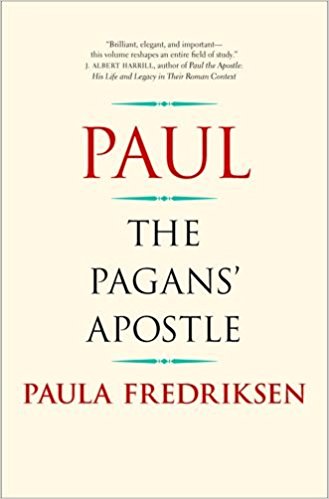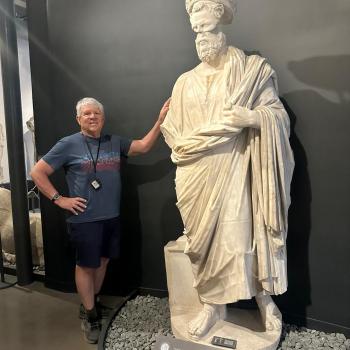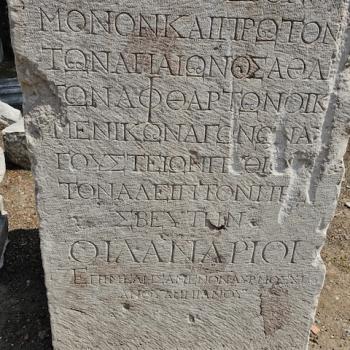Did Paul have Jews amongst his coworkers? Rom. 16 makes it clear he did. Did he convert some of these people to the following of Christ? He certainly did. Compare for instance the account in Acts 18.17 which speaks of a Sosthenes, a synagogue official (no proselyte he). 1 Cor. 1 (speaking at a later time than the time of Paul’s trial before Gallio), mentions ‘the brother’ named Sosthenes who probably helped Paul write down 1 Corinthians. More certainly Acts 18.8 tells us directly that Crispus, the official of the synagogue in Corinth became a believer in Jesus, and 1 Cor. 1.14 tells us that Paul baptized Crispus in Corinth, indeed he is one of the few people Paul baptized there. Is it at all likely that the Crispus of Acts 18 is not the Crispus of 1 Cor. 1.14? I would say no, and this refers to the ‘conversion’ of a Jewish synagogue official, or if you prefer, the changing of allegiances to a belief in Jesus as Messiah. Paul was concerned with the transformation of both Jews and Gentiles into Christ followers, though his focus was on the latter. It seems too much of a coincidence to say the Sosthenes, ‘the brother’ of 1 Cor. 1 is not the same one mentioned in Corinth. Why exactly would Paul mention him up front in 1 Cor. if the audience did not already know him?
And then of course there is Galatians. Paul tells us in Gal. 1 that in the past, he was advancing not in missionary work to Jews but in ‘Judaism’ in general, more than his Jewish peers, but he is not pursuing that course of action any more. He does not see what he is currently doing as ‘advancing in Judaism’ (presumably Pharisaic Judaism in particular). He sees it as something else. Notice that he says he was very zealous for ‘the traditions of his ancestors’. Not his contemporaries, like his teacher Gamaliel, but rather his ancestors, and he places his persecution of the followers of Jesus as part of his ‘former life in Judaism’. The portrait of Paul, for instance in Acts 7, suits this summary to a T. Paul went from being an extreme opponent of the Jesus movement, even to the point of physical violence, to being one of its most zealous advocates. He is equally clear that God revealed his Son ‘in me’ so that he might proclaim the Good News to pagans. This was to be his main life work.













